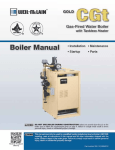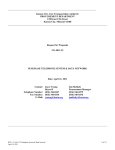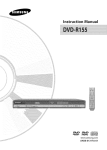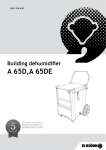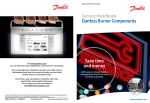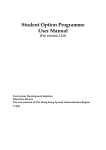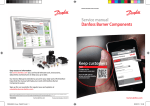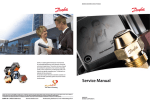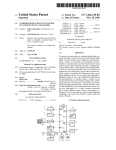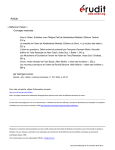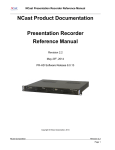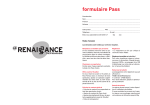Download Shot Monitoring Watch
Transcript
US008123624B2 (12) United States Patent (10) Patent N0.: Caldwell (45) Date of Patent: (54) SHOT MONITORING WATCH 2 a (76) Inventor: Theodore Weissenburger Caldwell, Notice: _ _ _ Primary Examiner * David L LeWis S ep .7 2006 ’ Related US. Application Data . . . . 51 ( ) (52) (58) Assistant Examiner * Eric M Thomas (57) ABSTRACT A golf swing monitoring system in the form of a one piece, Wrist mounted unit Which includes multi-function instrumen (60) grgglsgonal apphcanon NO‘ 60/657’999’ ?led on Mar‘ ’ 4/1980 OTHER PUBLICATIONS Pnor Pubhcatlon Data US 2006/0199659 A1 2846010 A Tekscan, FlexiF0rce(R) Sensors User Manual (Rev G), Feb. 5, 2009. Oct. 6, 2005 (65) I‘lIlCe 12/1996 Nakamum (Continued) (21) Appl. No.: 11/243,699 (22) Filed: lIjqtscher FOREIGN PATENT DOCUMENTS DE U.S.C. 154(b) by 437 days. _ Feb. 28, 2012 (Connnued) Subject to any disclaimer, the term of this patent is extended or adjusted under 35 lg; a 5588919 A Laguna Beach, CA (U S) (*) US 8,123,624 B2 ' tation With extremely high degrees of precision that monitors a plurality of critical components of a golf sWing. In particu I t Cl n ' ' lar, motion sensors that discriminate ?nite changes in the timing and speed of the sWing are disposed in a housing ‘4633 57/00 (200601) US. Cl. ..................................................... .. 473/221 Field of Classi?cation Search ........ .. 473/23li234, mounted on a Wrist bank analogous to a common Wrist Watch or timepiece A third Component’ user grip pressure, is Simuj taneously monitored and is similarly housed in the Watch 473/22li227 See application ?le for complete search history. housing or casement. The detected parameters are displayed on a LCD Which is part of the instrumentation. Finally the (56) References Cited U.S. PATENT DOCUMENTS 4,058,118 A 11/1977 Stupay et a1. 4,222,569 A 4,269,193 A 9/1980 DeMascolo 5/1981 Eckerle calculated values of the sWing components canbe saved in the memory of the invention. Subsequent sWings are compared With those saved and the degrees to Which later sWings con form or deviate from the values for the saved sWing are displayed. The subject invention has a skill level setting, 1 to 5 Where 1 is the highest skill level, 5 the least. As the skill level setting approaches 1, there is a much narroWer range of tol 4,307,727 A 12/1981 Haynes erance for deviations. Thus the match betWeen the trial or 4,331,154 4,387,437 4,409,983 4,987,900 5,261,412 5,406,952 5,511,789 5/1982 6/1983 10/1983 1/1991 11/1993 4/1995 4/1996 subsequent sWing and that saved in the memory of the subject invention must be nearly exact. Conversely, loWer skill level A A A A A A A Broadwater et a1. Lowrey et al. Albert Eckerle et al. Butter?eld et al. Barnes et al. Nakamura settings are more forgiving and offer a Wider tolerance for deviation from the saved values of the sWing components. 13 Claims, 3 Drawing Sheets US 8,123,624 B2 Page 2 US. PATENT DOCUMENTS 7,264,554 B2 7,341,561 B2 9/2007 Bentley 3/2008 Tanakaet al. 2255555; 2 lg?gg; 7,600,430 B2 10/2009 Palin 6131. 5,688,183 A * 11/1997 Sabatino e131. ............ .. 473/212 7,780,541 B2 8/2010 Bfluer 7,839,383 B2 11/2010 L1 eta1~ 5,733,201 A 3/1998 Caldwell et a1. 5,771,492 A 5,807,267 A @1998 Com 9/199g Bryars etal, 2001/0005695 A1* 2001/0053720 A1* 6/2001 12/2001 5,373,788 A 5,895,326 A 5,907,282 A 2/1999 Hoffman 4/1999 COZZa e161. 5/1999 TUOITO e131. 2002/0077189 A1 2004/0216216 A1 2005/0113167 A1 6/2002 Tuer et a1. 11/2004 Terrisetal. 5/2005 Buchner et a1. 6,037,703 A 6,196,932 B1* 6,224,493 Bl* 3/2000 Kambe e131. 3/2001 Marsh e161. ................ .. 473/223 5/2001 Lee etal ~~~~~~~~~~~~~~~~~~~~ ~ 473/223 2005/0119036 A1* 2007/0010341 A1 2009/0163824 A1 6,401,254 B1 6/2002 BOllef 6,402,634 B2* 6,491,647 B1 6,772,442 B2 6,913,559 B2 7,101,287 B1 6/2002 Lee etal. .................... .. 473/223 12/2002 Bndgeretal. 8/2004 Erker 7/2005 Smith 9/2006 Wagner Lee 6131. .................... .. 473/221 Lee etal. .................... .. 473/223 6/2005 Albanna e131. ................. .. 463/7 1/2007 Miettinen 6131. 6/2009 Ide 6131. FOREIGN PATENT DOCUMENTS JP JP 08173586 A 10043350 A * cited by examiner 7/1996 M998 US. Patent Feb. 28,2012 Sheet 2 of3 US 8,123,624 B2 FIGURE 2a and 2b 209. Speed, Time, and Grip Arrows indicate whether swing is over (plus) or under (minus) the pre-settings 201. Large numerals are realized values for club head velocity (mph)! elapsed time of t (misecs) and “the constaney ofgrip pressure exerted. 202. Handicap is self designated settings based on the user’s estimated gol?ng expertise where 00 is best, 99 i3 Worst. 203. Battery life is indicated by Elimination. 204. Audible Alert Volume indicator. US. Patent Feb. 28, 2012 305 LCD DISPLAY US 8,123,624 B2 Sheet 3 0f 3 ' - KEY PAD r302 I ALARMS FMICROCQNTRQLLER jh BATTERY 1,301 3 \ 350 WT) CONVERTER 304 PRESSURE SENSORS! 2303 AQCELEROMETER 306 FIG. 3. START PROGRAM 1 A‘ V EI..-UCY T Y SAVE SPEED SPEED (316(1) OR > LT (-) SAVE PROGRAM 2 ‘ ELAPSED TIME ‘ SAVE PROGRAMS _ GRIP PRESSURE SAVE 13.3.1. j G‘ m 0R 7‘ ‘ ‘RS1. GT(+) 0R LT (-) SAVE LT (-) SAVE FALSb RESTART AC'H VATE ALARM PEG. 4. 1 ACT! VA'FE ALARM RESART US 8,123,624 B2 1 2 SHOT MONITORING WATCH needs to development muscle and tempo memory in order to repeat the sWing and hence replicate the desired result. This application claims the bene?t of the ?ling of US. Provisional Patent Application Ser. No. 60/657,999, entitled “SHOTWATCH”, ?led on Mar. 3, 2005, and the speci?cation One device knoWn in the art that helps the golfer in some sense memoriZe and repeat the same golf sWing that produces the desired result is a glove Worn on the hand of the user as of that application is incorporated herein by reference. described in US. Pat. No. 5,733,201 by the same inventor. While the glove unit is a highly accurate and desirable device, it has the inherent draWback that it is in the form of a glove. The glove is not interchangeable to alloW use by either a As distinct from Sabatino et al (US. Pat. No. 5,688,183) the timing device and the sWing velocity monitor is not dependent upon any audible signal for activation. Sabatino et al rely upon the noise or sound generated When the club strikes the ball and the recording or detection of the impact noise is the start time for speed and duration measurements. The present invention commences the measurement of sWing right-handed or left-handed golfer, there is signi?cant varia tion in siZing and the glove can not be made as durable as the monitoring instrumentation attached to it. speed and elapsed time of the sWing beginning and ending SUMMARY OF THE INSTANT INVENTION When the club is perpendicular to the ground, in the ?rst instance When the golfer pulls the club aWay from the ball (t:0) and secondly When the club makes contact With the ball, (t:+1) As distinct from Sabatino et al (US. Pat. No. 5,688,183) the speed measurement (velocity) of the present invention is 20 captured by an instrument Worn on the Wri st and is therefore synonymous With hand speed during the sWing as opposed to Golf Club Velocity as speci?ed in the title of the Sabatino et al invention. Unique to the present invention is the skill level or HANDI CAP setting Which alloWs the user to specify his/her expertise 25 in executing a golf sWing. The present invention’s rationale is a bio-feedback device that alerts the users if he/ she has 30 pressure in a positive range and conversely, as grip pressure loosens, the sensor registers in a negative range. The invention possesses memory functions Which alloW the user to save the tempo and speed and grip pressure param 35 Words, on a driving range the golfer hits a long, straight shot. He simply presses the SAVE button on the invention and the parameter values Will be retained in memory. These values range of permitted divergence from the pre-set parameters. Such departures may be signaled by an audible signal, or a numeric representation of the Watch face of the present inven tion. eters folloWing the sWing that produces good results. In other BACKGROUND 1. Field of the Invention This invention is directed to a golf training or teaching device, in general, and to such a training device in the form of become the benchmark values against Which subsequent golf 40 a strap or band to be Worn on the Wrist of the user and Which incorporates components and assemblies for measuring vari ous parameters of the golf sWing. 2. Prior Art Statement Golf is a centuries old game With a long and Well docu 45 mented history. Until very recently, say the last 25 years, the equipment used Was rather basic, if not primitive. NoW that modern technology has come into the game, the equipment and apparatuses dedicated to the game are becoming more and more technologically advanced or sophisticated. 50 55 Improving one’s sWing is one of the Ways gol?ng enthusi asts can increase their pro?ciency. There are special clubs, Weights, video tapes and many other techniques for utiliZa tion during practice rounds or driving range sessions. The through repetitive trials. The error factors in statistically sig ni?cant trials Will generally distribute normally. This inven tion seeks to heighten and narroW that distribution (modal) by providing instantaneous information ideally leading to the BRIEF DESCRIPTION OF THE DRAWINGS 60 FIG. 1 is a schematic draWing of one embodiment of the training device of the instant invention. Each of the operator One of the more subtle di?iculties encountered by most golfers is the timing and speed of the sWing. There is no long, straight shot. Once that discovery is made the golfer With a larger margin of error before generating a signal. Thus the utility of the invention is to enhance muscle memory, helping the golfer learn to groove his or her sWing. reduction of error signals over repeated trials. nique While avoiding Wrong techniques. absolutely correct tempo or speed of the sWing. Trial and error is the only reliable Way to discover the sWing that produces a The range of tolerance before an error message is generated is also variable. The invention possesses a HANDICAP set ting. Should the user set a very loW HANDICAP, say approaching Zero, the error message or signal Will be gener The nearly instantaneous feedback makes the user aWare that they have either repeated theirbest sWing or failed to do so. As With most motor skills, the greatest pro?ciency is achieved lengths to Which they Will go to improve their ability. There is extant learning devices are primarily based on the feedback the golfer receives from them and thus learn the correct tech sWings are compared. Should the values on the subsequent sWing differ from those of the parameter settings, an error message in the form of an audible signal Will be activated. ated by very slight departure from the parameter values. Con versely, higher HANDICAP settings Will be more forgiving Globally there are over 100 million golfers. A signi?cant percentage of this number are What are called “avid golfers” not just in terms of playing frequently, but also relative to the some vague correlation betWeen pro?ciency and satisfaction. head speed are captured via activation at the beginning of the sWing and termination of the time interval is determined as being at the point of contact With the ball. The elapsed time in milliseconds and the club head speed in miles per hour are digitally displayed on the Watch face. The grip pressure is measured by an electric pieZo like sensor, deployed behind a metal plate on the back of the Watch. The Watch is tightly secured to the Wrist and in contact With the pulse pressure points. As the golfer’s grip tightens, the sensor registers grip diverted from their pre-set sWing parameters. As such, the higher the skill level or HANDICAP setting, the narroWer the The instant invention is directed to a training device in the form of a Wrist Watch. The timing or tempo of a golfer’s club sWing is detected by a motion sensor or accelerometer housed in a Watch casement. The elapsed time of the sWing and club controls are identi?ed. 65 FIG. 2 is a schematic representation of one design of a monitoring unit of the instant invention including the display area. US 8,123,624 B2 4 3 benchmark setting can be detected. Conversely, the beginner FIG. 3 is a block diagram of one embodiment of the moni toring circuit of the instant invention. FIG. 4 is a How chart of the operation of the system shoWn might care to set the HANDICAP SET (202) at a high or mid in FIG. 3. alloWs a Wide margin or error before activating the AUDIBLE ALERT SIGNAL. (204). The volume on the AUDIBLE ALERT SIGNAL (204) can be adjusted to accommodate the ambience. Alternatively, the volume can be turned off While the AUDIBLE ALERT SIGNAL volume indicator Will illu minate, indicating the user has executed a sWing outside the range point range, say 15 to 30. At these settings the invention DESCRIPTION OF A PREFERRED EMBODIMENT FIG. 1 is a schematic representation of one embodiment of the instant invention. In particular, this con?guration includes parameter settings of the benchmark sWing. a rubberized, vinyl Wrist strap and a metal monitor housing or Finally there is a BATTERY LIFE INDICATOR (203) on the LCD. As the 3 volt lithium battery runs loW on charge, the user Will be able to determine from visual inspection When the instrumentation package. The electronics package inside the housing can be removed from the strap if desired. The con trols are operated by the user in the folloWing sequence. The START BUTTON (100) activates the instrument. Next the user sets his or her HANDICAP (104) indicating their par ticular skill level. For example, a handicap close to “00” Would indicate a high level of golf pro?ciency. As the value of battery needs changing. Several features are programmed into the instant invention to conserve battery life. For example, When no sWinging motion is executed by the user after a benchmark sWing has been saved for 30 seconds, the device automatically goes into sleep mode. Only the memory the handicap setting is increased, approaching “99” the user’ s skill level is assumed to decrease. Functionally this translates to a highest level of precision or exactness required of the of the pre-settings are retained While no other functions Will 20 again. “00” handicap user or Scratch Golfer as opposed to a more forgiving standard the higher the handicap. The AUDIBLE ALERT ON/OFF BUTTON (101) acti vates the signaling device that Will sound or buZZ When the user fails to replicate the sWing he or she has saved folloWing be operational until the START BUTTON (100) is pressed 25 Referring noW to FIG. 3, there is shoWn a block diagram of the sWing monitor system 300 of the instant invention. This system is disposed Within a suitable housing to form the instrumentation package described in FIG. 1 supra. In this embodiment, the microcontroller 350 is the basic the sWing that produced the results needed to replicate the operational and computational component of the system. The saved or benchmark sWing. In particular, on a driving range, microcontroller 350 can be any type of microprocessor such as a loW poWer CMOS chip of any conventional design. Microprocessor: There are several choices available from the “off the shell” stock of chips. Our requirements are for 16 a golfer Will hit a sequence of golf shots. Presumable, only longest and the straightest one of those shots Will be saved. 30 The user accomplishes this by simply pressing the SAVE BUTTON (103). The data from the saved shot is compared to values recorded by the invention on subsequent shots. Depar bit CPU With enough memory to support our sophisticated softWare programs. Some models come ready equipped or preloaded WithAnalog to Digital Converters (A/ D Converter) tures from the saved values are detected and the audible signal is activated. (101) The DISPLAY TOGGLE BUTTON (102) is manually pressed at tWo different stops. A lighter touch activates the display of the tempo or elapsed time of the sWing variable in milliseconds. The timing sequence for the interval begins With the start of the back sWing and ?nishes When the club end ?rst begins to sloW drop or decelerate. Theoretically and empirically this is precisely at the instant of impact of the club head With the ball. When the user depresses the DISPLAY TOGGLE BUTTON (102) With slightly more pressure, the maximum club head speed Will be displayed in miles per hour. FIG. 2 is a representation of the LCD layout of the instant invention. Reference is made concurrently to FIGS. 1 and 2. As noted in the legend accompanying FIG. 2, the Speed and Time ArroWs (200) indicate Whether the trial shot, that is, shots or sWings taken after the reference or benchmark sWing has been saved, replicate the benchmark shot. The ArroWs 35 PoWer Supply 1 and 2: 301. TWo 3 CR2025 lithium long life batteries poWer the invention. As the technology of bat teries improves, driven by the demands from the high tech ?elds of hand held computers and telecommunications 40 apply selective control signals such as limit adjustments, sensitivity adjustments and the like to the operation of the 45 304 of conventional design. A typical A/D converter device has an 8-bit resolution and converts the analog signal from the timing device to a digital signal Which is then supplied to the microcontroller 450 and may be contained in the micro-con troller. 55 A suitable display 305, for example a liquid crystal display 60 (LCD), is connected to receive output signals from the micro controller 350. Display 305 represents one (or more) of the displays 201 and 202 shoWn in FIG. 2. The LCD display 305 is of typical design but may be custom made in order to provide any desirable display information such as that shoWn and described relative to FIG. 2. Of course, the display 305 can be an LED display or any other type of display Which is of suitable siZe and Within suitable poWer parameters. instant invention. A reliability coef?cient of 0.90 Was used as ?nal assessment criterion. As pointed out the HANDICAP SET (202) is user desig nated. As the user’ s skill level improves, and the HANDICAP SET (202) approaches 00, the margin of error can be dimin ished to the point Where virtually no deviation from the circuitry. The keypad 302 can also include the reset buttons described supra. The keypad 302 can be included in the hous ing for the package in FIG. 1 noted above. The chronometer 303 is representative of a suitable timing or tempo measuring device. The chronometer is connected to an A/D converter 50 (200) indicate the direction of the error or deviation from the The actual obtained values for club head speed and for elapsed time of the shot are displayed on the face of the LCD or Watch face. (201) The speed is expressed as miles per hour. The calibration of the speed Was achieved through ?eld trials Where several extant speed measurements instruments, mostly radar based, Were used to validate the accuracy of the devices, longer lasting, and more poWerful miniature batter ies Will become available. A key pad 302 is connected to the controller 350 in order to presetting, in either above (plus) the presetting or beloW it (minus). 304. As noted, an accelerometer 306 can be housed in a Wrist 65 Watch case along With the other devices. The accelerometer 306 can be included in a unitary package along With all of the other materials and components of the system. One such US 8,123,624 B2 5 6 accelerometer is the ADXL202 by Analog Devices Which is tWo directional and, therefore, capable to measuring accel eration in both positive and negative ranges. In this system, the back-sWing Will be registered in the negative range While the doWn-sWing Will register the acceleration of the club head. At the point of contact With the ball, maximum club head in units of MPH Will be attained, stored in memory and selec tively displayed. The club head Will decelerate on the folloW related to the operation of the accelerometer 306. This pro gram supplies the value of the club speed head in SPEED. to display 305. The program is reset by the SAVE BUTTON 103. The speed or velocity of subsequent sWings is compared to that stored in memory. If the speed is Within the range of tolerance determined by the HANDICAP SET 104, no error signal is generated. If, on the other hand, the club speed is signi?cantly different than the saved parameter, the through. AUDIBLE ALERT 101 signal is activated Program #2 measures the elapsed time of the golf club Typically, the accelerometer is of conventional design and is aligned With the direction of the sWing. The accelerometer sWing and drives the display 327. This Program is logically measures the force of the sWing usually Within an accelera tion rate of0 to +/—5 g’s. The accelerometer 306 also produces an analog electrical signal Which is supplied to A/ D converter 304 for conversion until they are reset With the SAVE BUTTON 103. into a digital signal. This digital signal is presented to the microcontroller 350. The signal generated by the accelerom tical to the previous tWo identical to Program #1. Both Programs loop back to START When the START BUTTON 100 is pressed. The preset values for both the speed and the elapsed time remain in memory Program #3 measures grip pressure and is logically iden eter then is converted to a reasonably accurate approximation of the club head speed Which is provided at display 305. The microcontroller 350, in addition to supplying the sig nals to the display 305, also can supply signals to alarms 307 Operation of the ShotWatch 20 In operation the user turns the poWer on by pressing the START BUTTON 100. Next the HANDICAP is set. Initially mounted in the instrumentation package 224. The alarms can be either audible or visual (or both). The audible alarm can take the form of a buZZer Which alerts the golfer to an improper sWing in terms of departures from the preset values the handicap WindoW Will display “00.” The range of values are from “01” to “40” for the HANDICAP SET BUTTON. 25 When the value displayed in Setting the handicap value estab 30 ments. (High handicap golfers Will not be able to exactly replicate their sWing on successive tries, While loW handicap and scratch golfers Will only vary their sWing slightly or not at all on repeated sWings lishes the range of tolerances for all subsequent measure or parameters saved in memory The pressure sensors 303 are electric pieZo type sensor strips encased in the instrument package. The muscles and tendons in the Wrist at the pulse point expand and contract as the hand’s grip tightens and loosens. A discriminating elec trical signal is transmited ?rst to the A/D converter and then to The user can set one or tWo of the variables being moni the microprocessor. Up to ?ve distinct grip pressure readings are captured in a golf sWing. The arithmetic mean is computed and that value is displayed and/or saved in the memory. Activation of the instrumentation package occurs When the tored. Having set one or tWo of the variables of the desired sWing, the monitor Will alert the user to deviations from the preset values. A ?ashing red light immediately beloW the 35 SPEED and/ or TIME labels Will tell Which parameter devia device is turned on at the START BUTTON 100. There are tions exist. (The range of tolerances for the deviations is links betWeen the chronometer 303 and accelerometer 306 such that at the instant the accelerometer 306 registers motion, the chronometer 303 starts the timing sequence. determined by the individual handicap.) To change the values saved in the system, simply press the interval from back-sWing to contact With the ball. Field tests START button. OtherWise, saved values for the MPH and ET Will be retained even if the instrument is turned “Off”, i.e. the unit is in the “sleep” mode. Therefore, the next time the unit have demonstrated that maximum club head speed is regis activated, the last settings Will appear. The timing or tempo measurement takes place during the 40 tered at the moment of contact betWeen the club head and the A “sleep mode” is included to conserve energy When the ball. At this instant the timing device stops running and records and displays the elapsed time from the point When the golfer ?rst begins the back sWing and ends takes hold of the device is inactive for sixty seconds. In the “sleep mode” the 45 invention, the application of over sWing or under sWing is indicated by sounding an alarm 407 noted above. Through the club When contact is made With the ball. The accelerometer is also activated on the back-sWing. The speed of the club head, Which is derived from a semi-log transform of hand speed, is measured in negative ranges until the top of the sWing. In the doWnsWing, the club head gains use of this training device, the golfer can learn to avoid or 50 speed or momentum until contact With the ball, at Which instant, deceleration begins. The device records and displays the maximum speed obtained. Basically, the invention is recording non-discrete, continu 55 ous data of the type depicted in a curve. For example, the path of the club head through a range of speeds. This is also the case With respect to the grip pressure measurement. The invention converts that analog data to a digital format, assigns meaningful values to the converted digital date, i.e. GRIP, SPEED and TIME, and stores and displays those digital val trials. The golfer on the driving range can use the invention With any club, Wood, iron, Wedge or putter. Following a sWing he 60 operation of the circuit. In one embodiment, this How chart is routines processed by microcomputer 350. Program #1 is or she Wishes to repeat, the device Will remember the values obtained. For example, one is hitting With a driver. Immedi ately after a long, straight shot, the golfer merely presses the FIG. 4 is a schematic representation of a How chart for the cessor 350. Typically, the How chart shoWs tWo related sub eliminate any variation from the sWing that gives the “best results.”. By using this golf band as a training device, the golfer can ultimately “memorize” the type of golf sWing Which is desired to optimiZe the playing of the game. The utility of this invention is derived from learning theory Which in its simplest form attempts to get the learner to repeat What he or she does right, and secondly be made aWare of depar tures or deviations from the correct action on subsequent ues. representative of the “fuZZy” logic operation of the micropro memory retains the last values stored. In accordance With this 65 SAVE BUTTON and the variables Will be placed in memory. A signal Will be transmitted, either a buZZ or a red light When the golfer deviates from those preset values on the next sWing or sWings. Depending on the golfer’s competence as determined by the Handicap setting Which can take on values US 8,123,624 B2 8 7 5. The sWing monitoring Watch of claim 1 Wherein the between 00 and 40, a very good or scratch golfer With a display comprises a liquid crystal display. handicap of 00, Will get an error signal With only minute departures from the preset values, While higher handicap 6. The sWing monitoring Watch of claim 1 comprising golfers Will have a much greater margin or error. alarm means electrically connected to said monitoring cir Thus, there is shoWn and described a unique design and concept of a golf training strap. While this description is cuitry. directed to a particular embodiment, it is understood that those skilled in the art may conceive modi?cations and/or variations to the speci?c embodiments shoWn and described herein. Any such modi?cations or variations Which fall Within the purvieW of this description are intended to be included therein as Well. It is understood that the description herein is intended to be illustrative only and is not intended to be limitative. Rather, the scope of the invention described herein alarm means comprises alarm means con?gured to selec 7. The sWing monitoring Watch of claim 6 Wherein the tively provide an audible alarm signal. 8. The sWing monitoring Watch of claim 6 Wherein the alarm means comprises alarm means con?gured to selec tively provide a visual alarm signal. 9. The sWing monitoring Watch of claim 1 comprising sWitch means for selectively controlling the operation of said electronic monitoring circuitry. is limited only by the claims appended hereto. 10. The sWing monitoring Watch of claim 9 Wherein the The invention claimed is: sWitch means comprises sWitch means con?gured to reset 1. A sWing monitoring Watch comprising: sWitches connected to said electronic monitoring circuitry and to said display. a pieZo sensor; an accelerometer; monitoring circuitry con?gured to receive signals from the 11. The sWing monitoring Watch of claim 1 comprising pieZo sensor and the accelerometer and con?gured to position marking means on the front of said Watch to assist in the positioning of a golf club relative to said strap during a determine, based at least in part on one or more received golf sWing. signals, a sWing speed of a sWing, an elapsed time of a sWing and a grip pressure of a sWing; accelerometer comprises a tWo-axis accelerometer that pro a display con?gured to display information determined by 20 12. The sWing monitoring Watch of claim 1 Wherein the 25 the monitoring circuitry; and a Wrist strap for mounting the pieZo sensor, the accelerom eter, the monitoring circuitry and the display to a Wrist Wherein the mounting of the pieZo sensor provides for generation of signals responsive to changes in circum take-aWay or backsWing, to contact betWeen a golf club and a golf ball. 30 analog to digital signal converter. 4. The sWing monitoring Watch of claim 1 comprising a micro-processor. 13. The sWing monitoring Watch of claim 1 Wherein the pieZo sensor comprises a strain gauge con?gured to provide for the generation of signals responsive to changes in circum ference of the Wrist caused by muscle movement, the genera tion of signals for registering, recording and displaying a ference of the Wrist caused by muscle movement. 2. The sWing monitoring Watch of claim 1 further compris ing circuitry for determining a skill level based at least in part on information determined by the monitoring circuitry. 3. The sWing monitoring Watch of claim 1 comprising an vides signals to the monitoring circuitry to determine hand speed of a golf sWing and elapsed time of a golf sWing from user’s grip pressure exerted on a handle or grip of a golf club 35 during a sWing.









